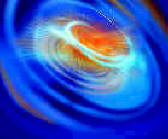 Wordtrade.com
Wordtrade.com
Medicine
Review Essays of Academic, Professional & Technical Books in the Humanities & Sciences
The Treatment of Epilepsy, 2nd Edition, edited
by S. D. Shorvon, Emilio Perucca, David Fish & Edwin
Dodson (Blackwell Publishing) Epilepsy is a common and important
neurological condition, and its treatment has become increasingly complex in
recent years. In contrast to many existing large volumes on epilepsy, where the
coverage of the biology and phenomenology of the condition dominates,
The Treatment of Epilepsy concentrates on the clinical treatment and
day-to-day management of epilepsy.
The first edition was published in 1996 and
has become a standard text in the field. Since then, the science of epilepsy has
advanced remarkably, and this second edition has been fully revised to reflect
these advances as they relate to treatment. While the primary purpose of the
book has not changed, new material has been added, with 28 new chapters, 108
contributors from 19 countries, and 2 new editors. As before, the goal is to
provide a systematic survey of the whole field of contemporary treatment.
Medical and surgical therapies are both covered in depth, as are the principles
of treatment in different clinical contexts. A deliberately international
perspective is taken, and account taken of the changing social and cultural
aspects of modern epilepsy practice.
Advances in therapy fall into four main
themes, and these four themes run through
The Treatment of Epilepsy. Perhaps of greatest importance has been the
rise of molecular genetics – a tidal wave that has swept across all of medicine
and which has left few areas of clinical therapeutics dry, and certainly not
that of epilepsy. The impact on clinical practice is only just beginning to be
realized. Molecular genetics has lead to – and will surely lead to more –
designer drugs, treatment predicated on new molecular targets, and therapies
designed to interfere with specific molecular processes. Similarly, the
understanding of the genetic and molecular basis of drug responsiveness may
result in matching patient genetic profiles to specific therapies with greater
predictive accuracy. The second major change in epilepsy therapeutics since the
publication of the first edition has been the consolidation into clinical
practice of a range of novel antiepileptic drugs, and the gathering of more
substantial and well-evidenced information about the established medicaments.
This development too is covered in this second edition, where eight more
chapters have been added, devoted to new individual drugs. The scientific
quality of drug evaluation has also greatly improved in the past decade, and
this improvement is reflected in the book. The use of clinical protocols for
therapy, with a strong emphasis on hard evidence rather than on clinical
anecdote, is a welcome change, and one covered in the text. The third major
change in epilepsy management through this period has been a contextual change,
with more attention being paid to patient-centered issues, to individuality, to
patient preference and to the individual clinical circumstances in which
epilepsy manifests. The final thematic change in this edition is the attempt to
integrate more closely the investigatory advances in epilepsy – which have had
their greatest impact on surgical rather than medical therapy – with the
specific modes of surgical therapy. Although the advances in investigatory
technique have been less dramatic than in previous decades, and many techniques
are still research-focused, the utility of individual techniques needs to be
clearly defined and backed up with an evidence base.
The Treatment of Epilepsy concentrates on this theme.
The editorship of this volume has also
changed: Fritz Dreifuss, a top-notch epileptologist and a founding editor of the
first edition, died on 18 October 1997 and David Thomas also stepped down as
editor. Emilio Perucca and Ed Dodson have both joined the editorship, both
renowned international figures in epilepsy, and bring new perspectives from
different continents and different specialities. In addition, over half of the
108 contributors to this edition are also new.
The underpinnings of the book, though,
remain unscathed by the passage of time. The primary objective is unchanged – to
provide a systematic review of the whole field of contemporary therapy in
epilepsy. The emphasis is, as before, on a text that provides practical
information, useful for the clinician but comprehensive, accurate and concise.
The contributors examine the evidential basis of both conventional and
experimental therapies, and cover all therapeutic options. As in the first
edition, summary tables have been used to present information, especially in
relation to drug therapy in an easily digested form. It remains the basic
purpose of the book to guide clinical practice and rational therapy, and to be a
source of reference for clinicians at every level.
The spirit of internationalism which was
strongly emphasized in the first edition is also the central plank of the
second. The spirit of the International League Against Epilepsy (ILAE) remains
central to this book. The foreword to this volume was written by the current
President of the ILAE, Giuliano Avanzini, himself a highly distinguished
epileptologist and clinician scientist.
The Treatment of Epilepsy is a reference work with a strong practical
bias, aiming to guide clinical practice and rational therapy in the difficult
decisions involved in successful therapy. This is the definitive text and a
source of reference and assistance for neurologists and neurosurgeons, other
clinicians and trainees at all levels who treat patients with epilepsy.
Over 800 pages, 63 chapters and over 80
contributors, all of outstanding international status, makes this the definitive
book on the subject. – Journal of Neurological Sciences.
Headline 3
insert content here